As I close out the year of learning about the Retama, Parkinsonia aculeata, for Tree Following at Loose and Leafy, join me for year-round look-see at this fascinating native tree to parts of North and South America. Indigenous to Texas and westward to California, as well as to large areas of Central and South America, this beautiful small tree is a boon for wildlife and native plant/wildlife gardeners alike.
This October of 2015, my Retama tree is green, leafy, and full of life.
There is little change from my September and August Tree Following posts, except that there are few flowers left to complement the feathery foliage.
Interestingly, there aren’t many seed pods on my tree this year, either. Seed development varies from year to year and I’m betting that there are fewer because the mass of late spring blooms were knocked of during our heavy May/June rains: fewer flowers, fewer seeds.
In October, with summer continuing its hold of warm (not hot!) afternoons, arid breezes, and no rain, the Retama presides, lush-n-lacy, over my back garden.
Retama foliage is a series of leaflets aligned opposite one another along paired leaf stalks.
As the days shorten and the temperatures cool significantly, the leaflets adorning the paired stalks begin dropping off.
The stalks will be left, for a time, as a spidery remembrance of the elegant and unusual foliage.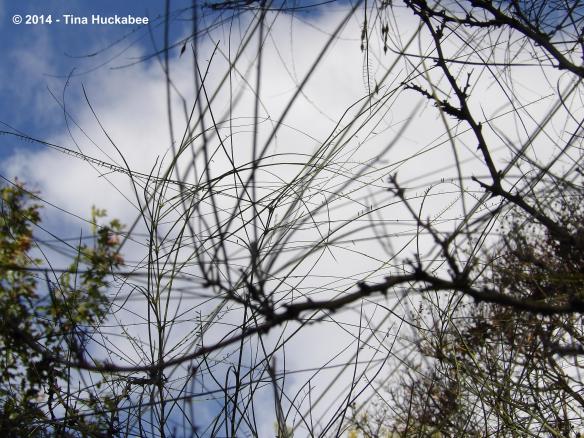
If or when there is a hard freeze (after all, Retama flourishes in tropical and semi-tropical climates), all manner of Retama foliage–leaflets and stalks–vacate the tree, joining with other deciduous leaves–either on the ground as mulch, or in the compost bin for future soil nourishment. Here in Austin, that will typically occur in late December and January.
The limbs and trunk of the tree remain green throughout winter. This adaptation is valuable for survival and stunning to observe. The transfer of the photosynthesis process from foliage to limb allows Retama to continue feeding during times of drought, and to maintain vigor during the relatively short, but temperature variable, winter months.
In the deep of winter (such that it is in the Southwest U. S. and other regions where Retama is native), the green of the limbs and trunk provide life-affirming color and are an attractive feature in the winter landscape.
Without foliage, the thorns on the branches are more noticeable. Be careful, they bite!
As spring approaches in March, the Retama responds with green,
…green,
…green foliage.
Retama is a member of the Fabaceae, or legume family. Other Fabaceae plants are nicknamed “broom”, if they sport slender stems with tiny leaflets. The unusual leaf or “broom” arrangement of Retama lends a soft, verdant look to the tree throughout its growing season.
By May or June, clusters of bright yellow flowers form and will flower continuously, causing pollinators to visit regularly and, no doubt, eagerly.
The Retama flower is an interesting one, because the petals are bright yellow, except for one which is called the “honey” petal. The honey petal is pale to deeper orange.
Once pollinated, the colored petal deepens and remains on the tree longer than the other petals. The flowers adorn the plant in response to rainfall and can bloom for a long period of time–late spring, all through summer, and into the fall. My particular Retama does not grow in full sun, so it’s never achieved the mass blooming that a Retama in blasting sun would produce.
In this year (2014-2015) that I’ve Tree Followed the Retama and profiled it for A Seasonal Look, the tree experienced a range of extremes–not that unusual here in Texas, as this is a land of extremes–but noteworthy. We enjoyed a “normal” spring with mild temperatures and average rainfall. However, in May and early June, we received nearly 20 inches of rain, temporarily halting an 8 year drought. Known as a “rain bomb,” that type of flooding has always occurred in Central Texas and is often, though not always, a drought-buster. The Retama’s response to the heavy rains was to drop its first flush of glorious flowers that had opened in May.
For the latter part of June and into July, my Retama was flower-less, but it did produce more clusters as the summer months progressed. Once the rain stopped in early June and the Texas summer temperatures and dry conditions settled in for the duration (and duration and duration…), it took a little time for the tree to set out its signature bloom sprays. I didn’t water my gardens until mid-July and have only watered four times as of this post. After the flowers were pummeled by the May rains, the tree bloomed up again, much to the delight of the bees, butterflies and hummingbirds.
Oh, and the gardener too.
In more typical years, the Retama is a solid bloomer during the toughest months of our growing season and with minimal rain or irrigation. After the wet spring and then with no rainfall until late August/early September (and not much then), many plants succumbed. Even some native plants that are evolved to withstand the capriciousness of the Texas climate, struggled this summer. The Retama? It flowered and foliaged along just fine, thank you very much:
In July,
….August,
…and September.
It was green, blooming and gorgeous. What’s not to love about that?
Birds are constant companions of this tree.
As the flowers fade and the seed pods form, first green,
…then brown,
…the tree adds other delectables to the landscape besides pollen and nectar: small mammals and birds (in particular) enjoy feeding on the seeds. In areas of the world where Retama is invasive (parts of Africa, India and Australia), it is most likely birds who’ve spread Retama to problematic levels. I don’t want to blame birds for Retama’s invasiveness–that’s squarely on people and lack proper management for introducing non-native and potentially harmful species to new areas without first experimenting with natural controls. Where Retama is native, it’s an excellent plant: water wise, wildlife friendly, and beautiful. Where it’s an introduced aggressor in the landscape, it’s proven a serious problem for indigenous flora and fauna, requiring great efforts to remove. For example, Australia has banned the sale and planting of Retama.
Have I mentioned that it’s always best to plant native?
Here in Central Texas, the Retama is a plant which needs little, if any, supplemental watering. It grows remarkably fast, reaching to “tree” height in a matter of a few years. I mulched it when it was a baby tree (I think I purchased it as in a one gallon pot), but I don’t mulch established trees. Retama is commonly available at locally owned nurseries, especially in late summer and fall, which are good times of the year to plant perennials and trees here in Texas. Retama has a graceful natural form and doesn’t require pruning, except if a branch dies–or perhaps if the gardener is weary of getting dinged on the head by a formidable Retama thorn.
Retama trees aren’t particular about soil types, so no amendments are necessary. If much irrigation or rainfall is the norm, Retama will seed out, but in its 12 or 13 years in my garden, I’ve only found a half-dozen seedlings from my tree.
If you live in Retama’s native range, you’d be hard-pressed to grow an easier or lovelier tree to accent the southwestern garden.
In Spring,
…Summer,
…Autumn,
…Winter,
…Retama is a stunning tree: hardy and reliable, wildlife friendly, and darned pretty to look at. Who doesn’t want plants with those descriptors?

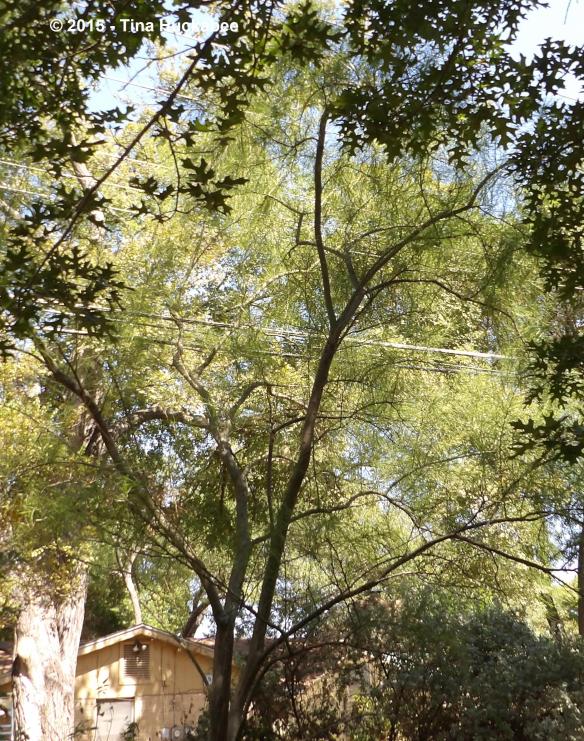
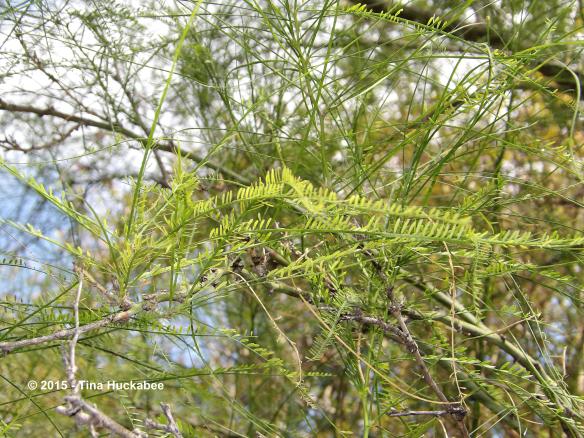

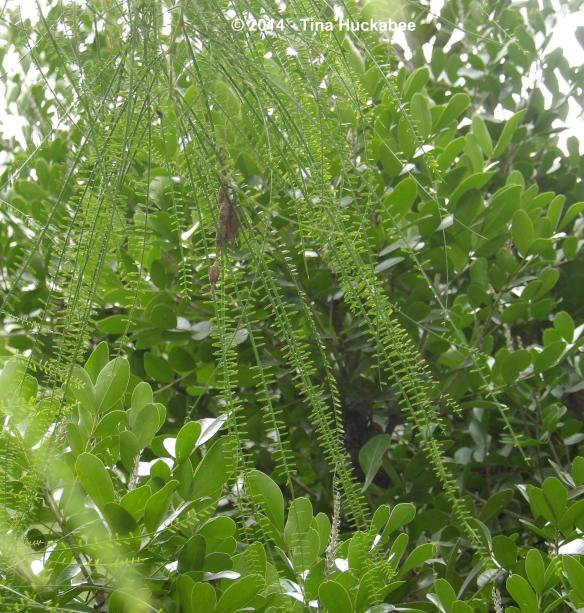

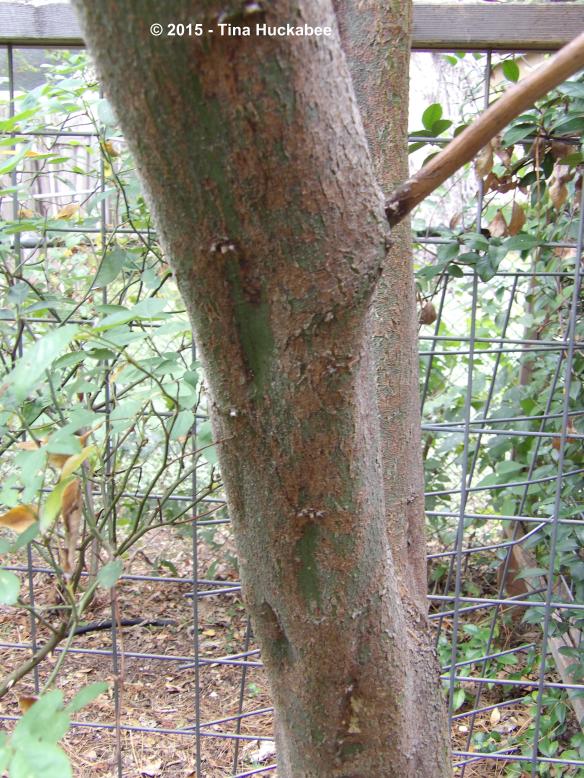

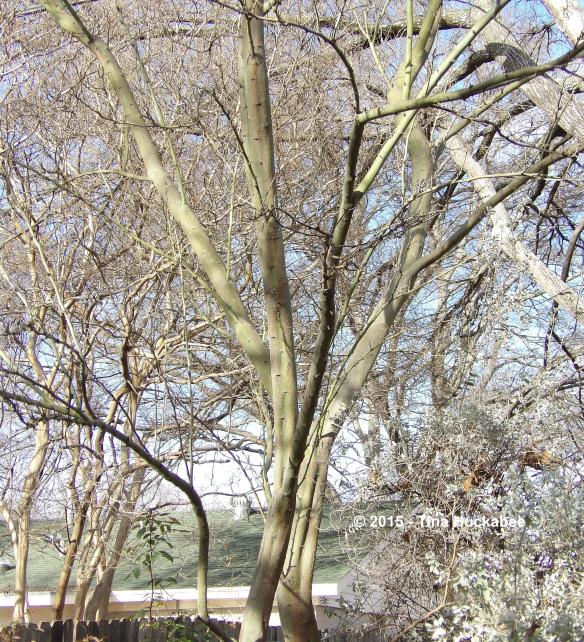
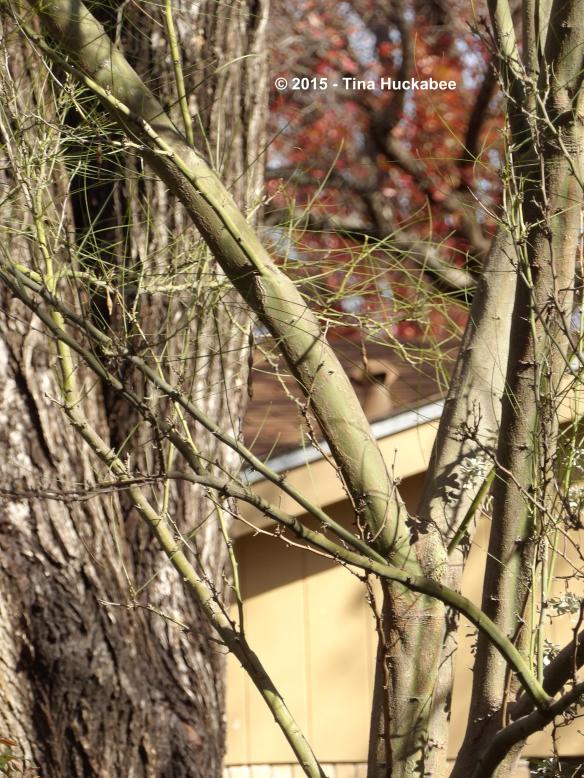
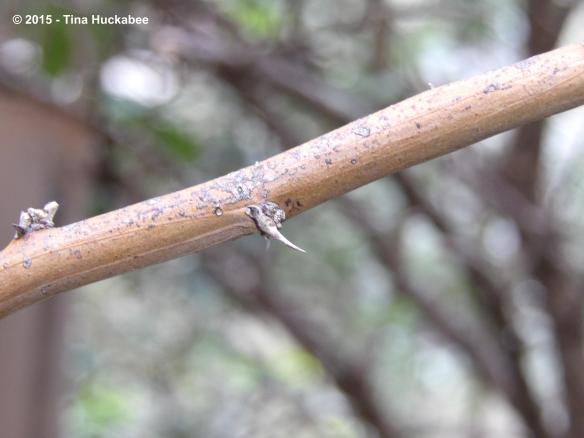
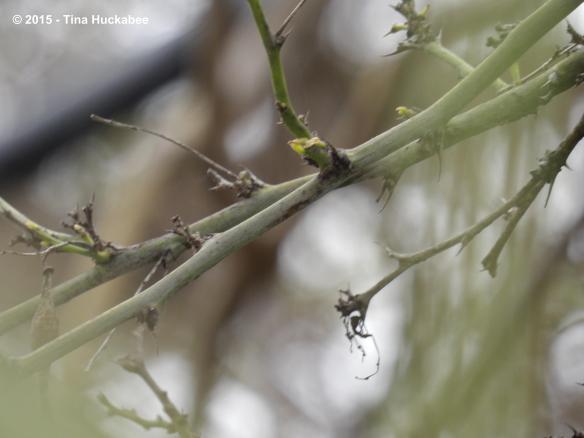
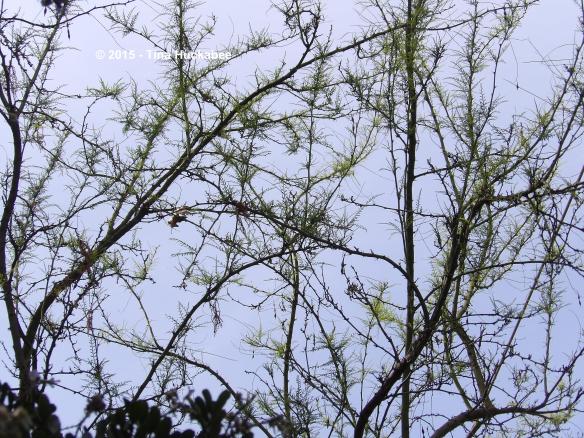
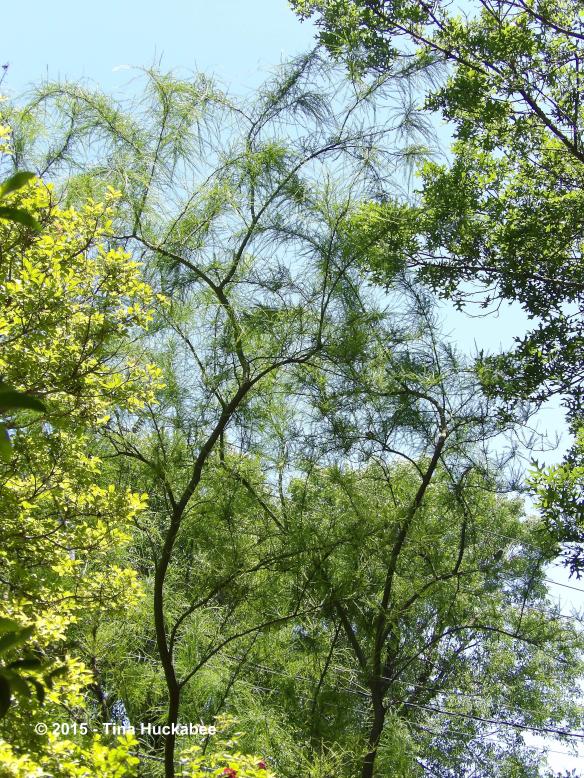
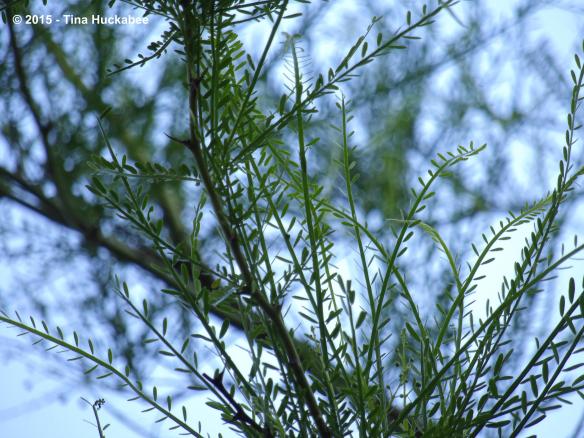
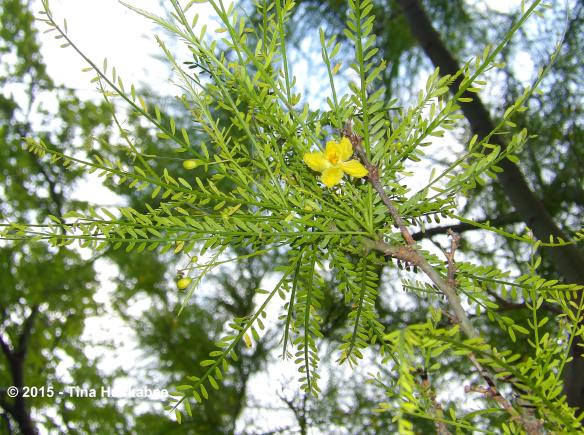
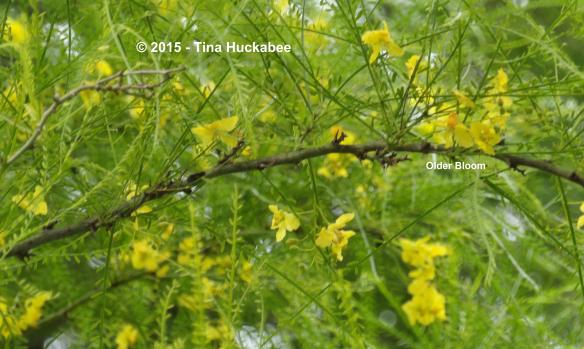
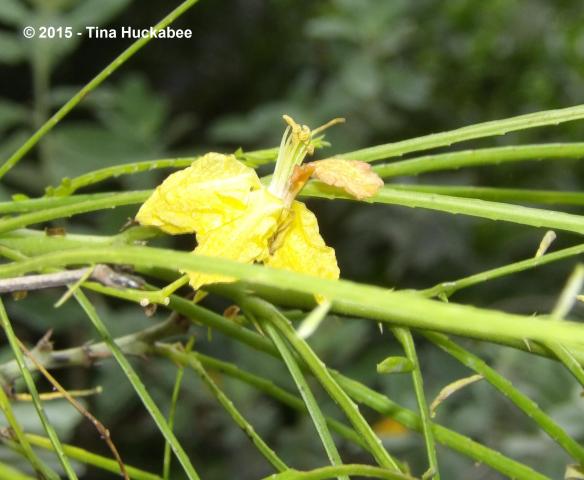

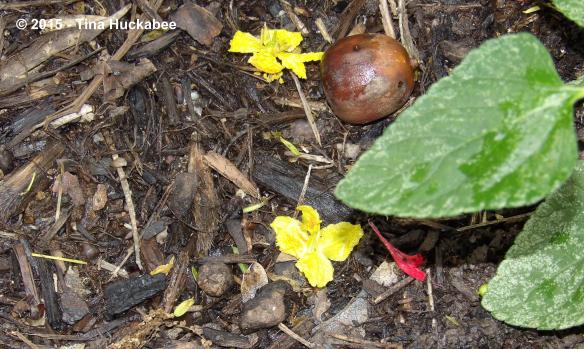
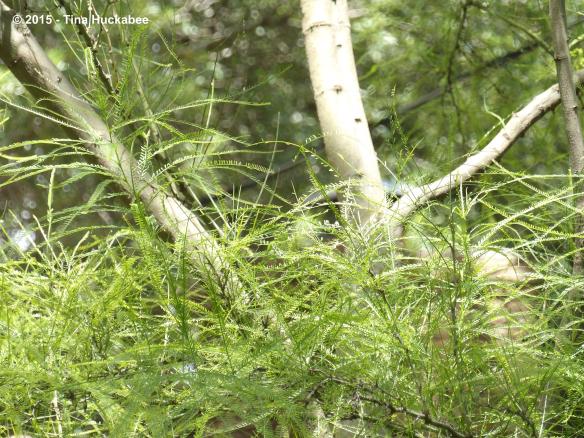
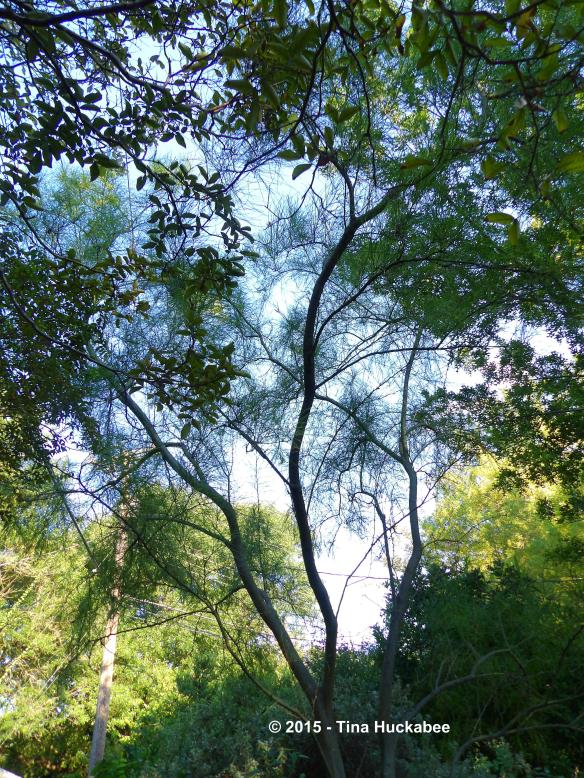
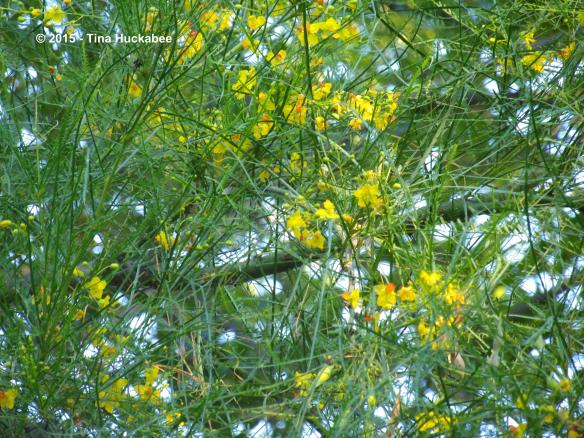

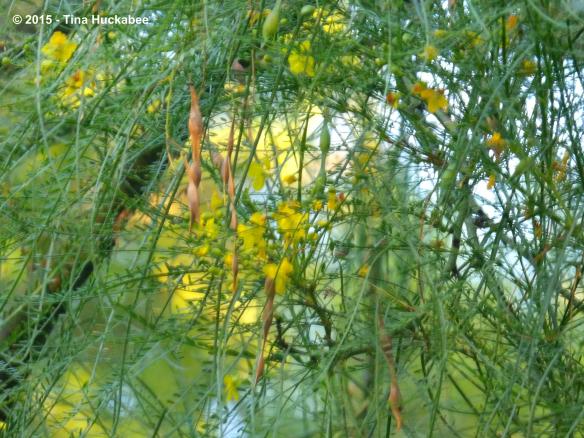
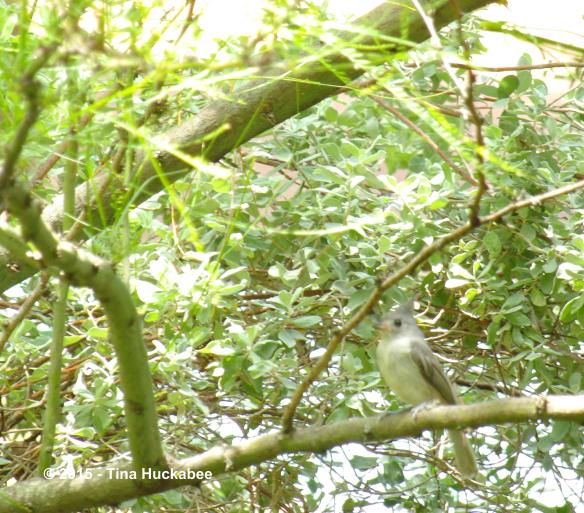
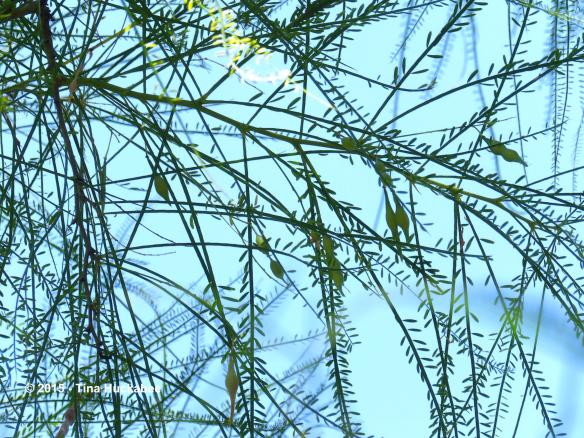
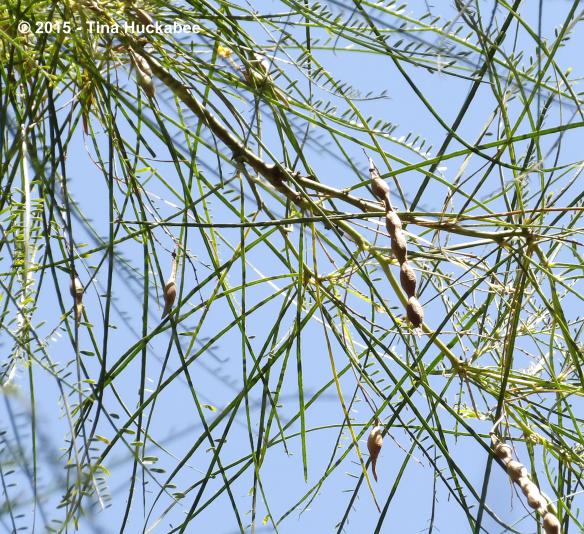

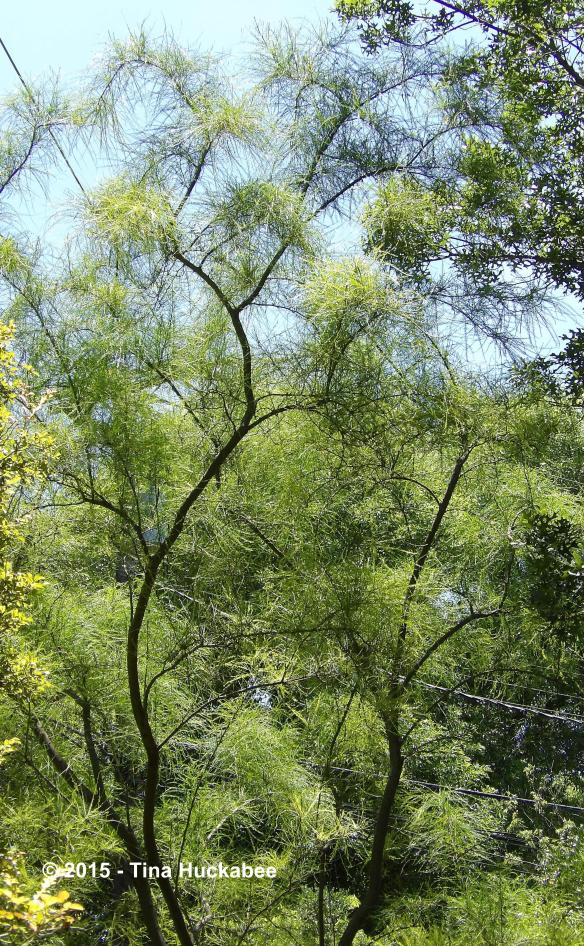

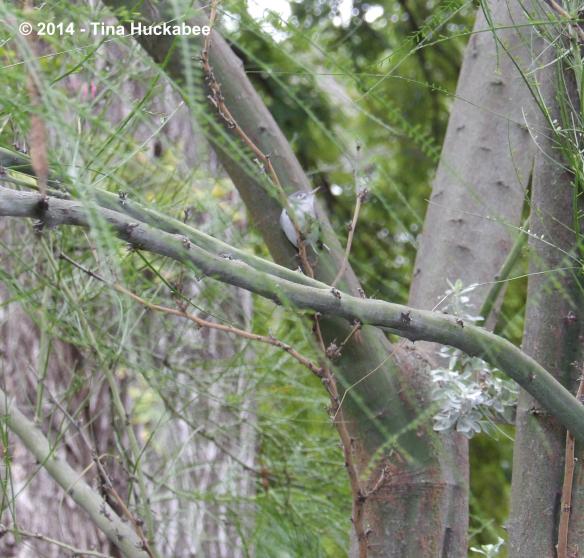
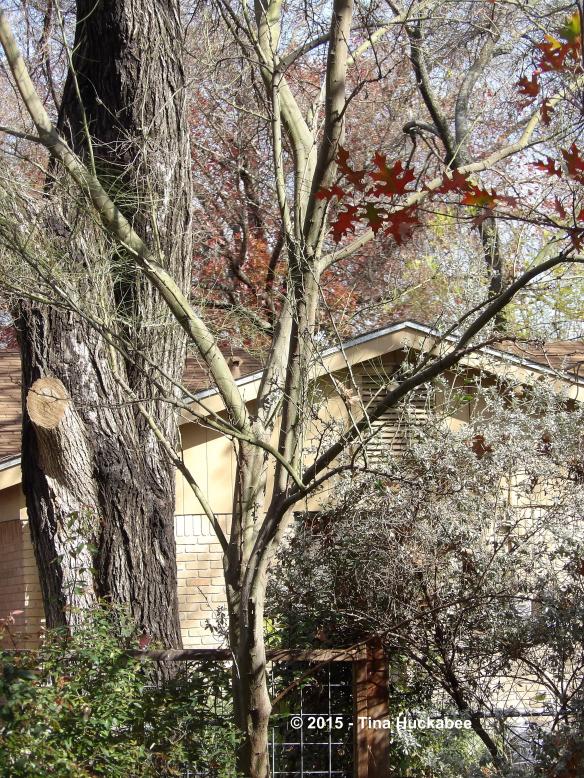
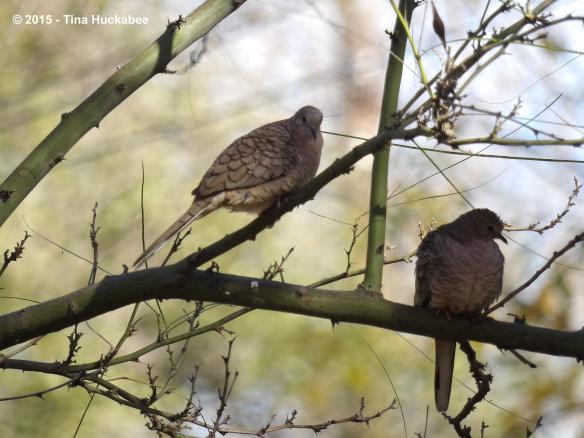
Lovely informative post Tina, showing your Retima through the seasons was a treat. I hope you do get some rain soon, do you expect any?
LikeLike
Thanks, Julie. It’s been an interesting tree to get to know better–more than just another pretty face! As for rain, unfortunately, it doesn’t look like it for the next few days. Boo!
LikeLike
This post is an ode to Retama…. Not many trees can claim such admiration.
There are days I wish for a magic wand to garden with… OUT would go the straggly clumps and IN would go a cleared area centered by a lovely retama. Minus that wand, I’ll stick to admiring yours as beautifully documented year ’round. Go Texas Trees!
LikeLiked by 1 person
The Retama was an unplanned purchase, but one I’ve never regretted. A lovely tree–I recommend it to any Texas gardener. Go Texas Trees–indeed!
LikeLike
Hi Tina. So sorry. I should have replied earlier – when you first raised a question about Sycamores. The reason why yours will look different from mine is because different names are used in the USA and UK. Our sycamores are in the Acer family while ones in North America the Platanus. Here’s a link to a UK woodland site which describes what we’d call ‘Sycamores’ http://tinyurl.com/ndnugp7 ; and here’s what we call London Plane Trees http://tinyurl.com/ovumo5y Oh the joy of languages and confusions!
LikeLike
Thanks for the reminder–I knew the terms were different, but had forgotten. I haven’t decided if I’ll follow my Sycamore (Platanus occidentals–I think!), but I’m leaning that way. Thanks for your hosting of Tree Following–I’ve enjoyed the process and probably wouldn’t have had the self-discipline to follow and learn about a tree without the incentive of the meme.
LikeLike
Such a great profile of this tree, thank you! I’ve been wanting more info on it as I’m looking for something against the fence in my new bed, to hide the view of neighbor’s yard. This is really helpful!
LikeLike
Thanks, Wendy. It’s a wonderful addition–beautiful, unusual and easy. I saw some one gallon pots on sale at BSN last week….
LikeLike
I really enjoyed your story of retama through the year, and the descriptions of the central Texas climate … must be a tough tree indeed. The green on the older stems/trunks is fascinating. Is it year-round, or just in winter?
LikeLike
Hi Hollis and thanks! The green bark is green–all year round. As the tree ages, the bark develops some “callouses”–thus the cantaloupe look to the trunk in a couple of the shots, but yes, the limbs are a lovely green throughout.
LikeLike
Great post. I am amazed about how this tree photosynthesizes through its limbs. Do other trees in arid climates have this ability? We are having a very dry autumn here as well, I am going to do some watering of new plants this weekend. Very unusual.
LikeLike
Thanks, Jason. I know that there are some related species which do this synthesis-in-the-limbs thing. Check out this link at the Lady Bird Johnson Wildflower Plant Database: http://www.wildflower.org/plants/search.php?search_field=parkinsonia&newsearch=true&family=Acanthaceae
Dry, dry. dry–where are those fall rains?
LikeLiked by 1 person
None predicted here for the next ten days.
LikeLike
I’m not gonna “like” that!
LikeLike
That is a fascinating tree. I really like the foliage and the bark … and of course the flowers!
LikeLike
Isn’t it? It’s an all-around great plant for the garden–at least, in the desert southwest!
LikeLike
What a lovely tree, and your post about it is amazing! I love to see someone so passionate about something, especially when that something is from nature 🙂
LikeLike
Thanks, Jessica–it is a lovely tree! Thanks for stopping by!
LikeLike
I would but I can’t plant a Retama! But I will plant a Magnolia soon :))
A great and interesting tree, you surely made it well known to the readers :)) I don’t see why someone living in an suitable climate wouldn’t plant one in the garden.
LikeLike
Really, a Magnolia? Will it be winter-hardy where you are? The Retama is a gorgeous tree–I agree that anyone who could, should plant it here in the Southwest; it’s a winner!
LikeLike
There are many species and cv. hardy here; we had at the other place a M. stellata but it’s a bit too early flowering and would get pinched by frost some years. To begin with, we’ll have now a Magnolia ‘Ann’ (pink, late flowering) 🙂
LikeLiked by 1 person
I really enjoyed reading about your truffula (ahem retama) each month. I love this idea of following a tree for a year.
LikeLike
It’s been enjoyable, learning so much about this tree. You should do this Tree Following business–I bet you’d enjoy it!
LikeLike
Hello! Some of my retama a branches seem to need support. What do you recommend to hold them up?
Thank you
Robin Neal
LikeLike
Well, I’m not quite sure what you mean by needing support. If the branches are lagging, they probably need to be pruned to the trunk. A healthy tree will grow as it’s supposed to. Make sure that the tree is in mostly sun as this tree is truly a sun lover. All the best with it!
LikeLike
Your article is so informative and entertaining to read about the very unusual and interesting tree the retama. We had the luck of being given 5 retama saplings courtesy of the TreeFolks organization here in the Austin area, and have planted them in the backyards of our home & rental properties. Would like to ask how often should we water the saplings. After the first 10 days of daily watering we’ve cut it down to about every other day but unsure if that is regular enough. These baby trees are growing well so far after being in the ground for 6 weeks. They seem to be fast growing and are such a joy to behold.
LikeLike
Retamas are tough plants! At this point, I’d water thoroughly, once every five days or so. You want deep, infrequent waterings with most plants and these are especially drought tolerant. You’ll have to moderate that some once summer’s heat arrives, but I’ll bet you’ll still be able to get by with a once/week drink. By fall, once our wetter season arrives, I don’t think you’ll ever have to water. Like, never. 🙂 Lovely plant, great choice!!
LikeLike
We have a gorgeous retama tree! But with yesterday’s storm (hail and heavy rain) one large branch has split! We plan to remove the broken part and hope the rest of the tree does well. Should the tree have been pruned to prevent this sort of “catastrophe”? (If you respond to my email, I can send a picture of the tree.) Thank you.
LikeLike
Hi Virginia, Don’t worry about hurting the tree. Just neatly prune off the damaged branch to the trunk or a major branch. It’s hard to predict whether a branch will split. One rule of thumb is that very tight “V” shapes are vulnerable, but that’s only with certain kinds of trees. Retama’s are tough and pruning won’t hurt it.
LikeLike
The tree is good size. The limb that has split is 17″ in circumference at the trunk end of the split and is 27″ long. Plan to prune that limb off later today (when it dries off). Will also spray the cut region. Thank you for your comments.
LikeLike
Wow, that is a big limb! You have your work cut out for you. Two things: make sure the final cut (at the healthy part of tree) is a clean cut and you don’t really have to spray the cut. Most trees have their own natural abilities for healing their wounds. It’s probably not a bad idea to sterilize your saw, but spraying is not necessary.
LikeLike
Pingback: Out For Dinner | My Gardener Says…
Pingback: Feeling Spring | My Gardener Says…
Pingback: Is This All? | My Gardener Says…